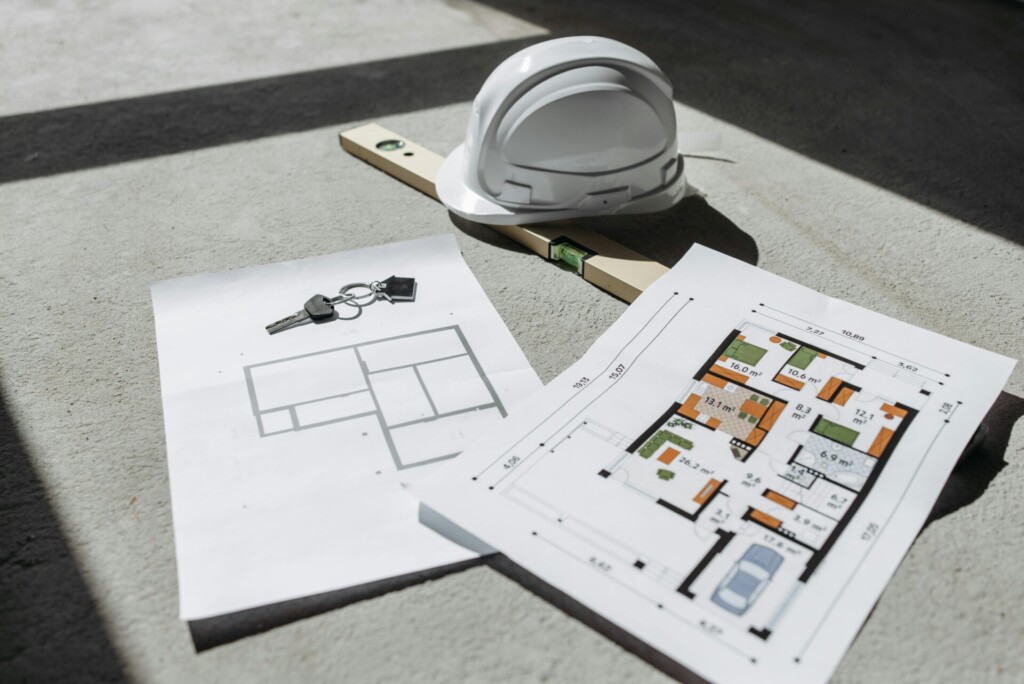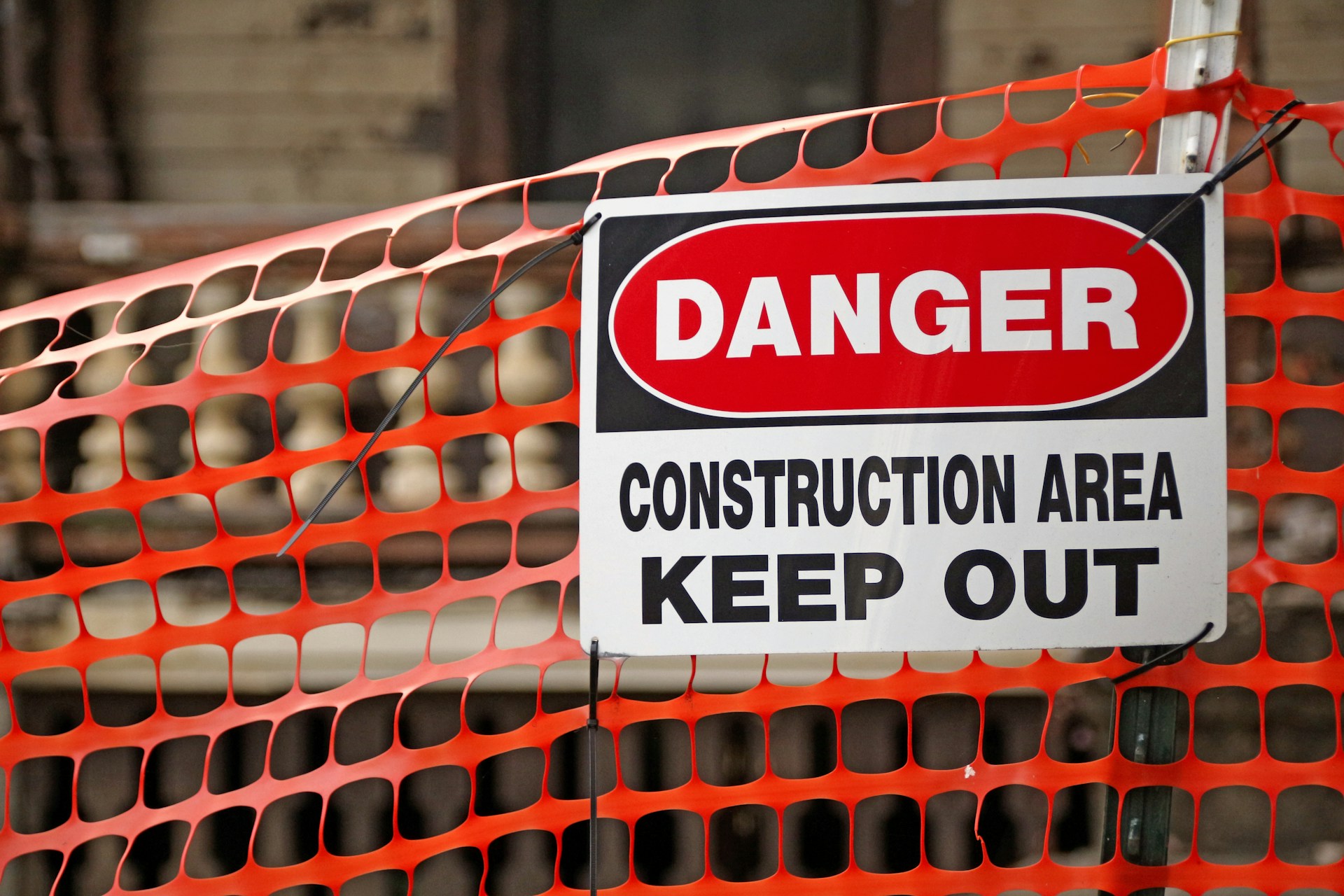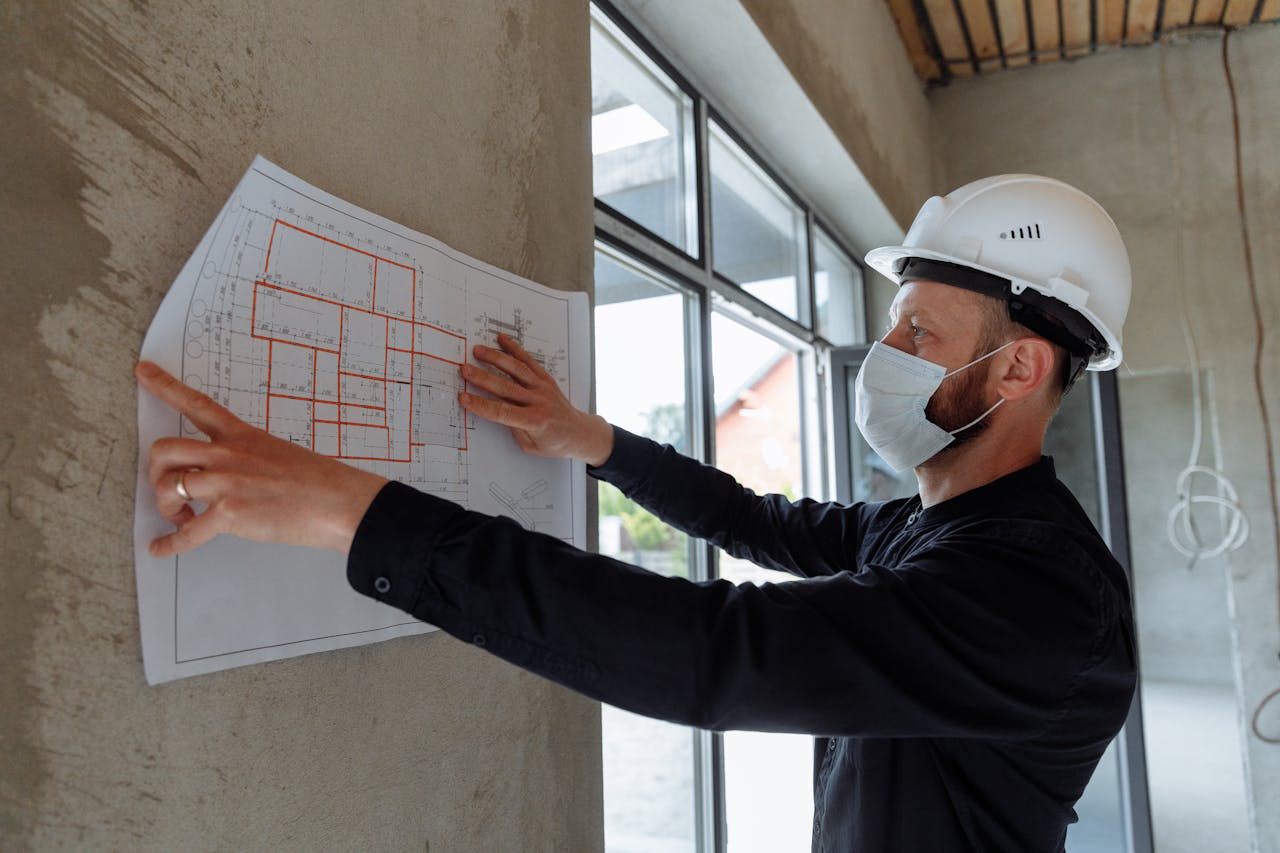The commercial construction submittal process is a vital quality control mechanism that ensures project success. Before any construction begins, this process verifies that all materials, products, and equipment meet exact specifications. For large commercial projects, this involves coordinating thousands of different components—from structural elements to complex prefabricated systems.
At EB3 Construction, we view submittals as the foundation of effective project execution. Our process converts abstract plans into tangible, vetted materials ready for installation. An approved submittal from our team confirms the green light on both quantity and quality, authorizing items for fabrication and delivery to the site.
This workflow serves as our final quality checkpoint before materials arrive on-site. We ensure every product aligns perfectly with design intent, performance criteria, and contract requirements. By identifying potential issues early through rigorous submittal review, we protect schedules and budgets from costly rework.
What Types of Submittals Are Used in Commercial Construction?

Commercial construction projects utilize several types of submittals to verify compliance with project specifications and ensure quality control. Let’s examine the key submittal types and their purposes:
Shop Drawings
Shop drawings provide detailed illustrations of how specific components will be fabricated and installed. This includes critical information such as:
- Precise dimensions
- Materials to be used
- Assembly and connection details
- Relationship to adjacent building elements
Shop drawings allow architects and engineers to verify that prefabricated items will integrate properly with the overall design before fabrication begins.
Product Data Submittals
Product data sheets contain essential details about materials and equipment, including:
- Manufacturer specifications
- Model numbers and options
- Performance data and ratings
- Installation requirements
- Compliance with relevant codes and standards
These submittals confirm that proposed products meet the project’s performance and quality requirements.
Material Samples
Physical samples allow stakeholders to verify the aesthetic and quality aspects of materials, such as:
- Color and texture of finishes
- Visual characteristics of materials like stone or wood
- Fabric swatches for furnishings
Samples ensure the final appearance aligns with the design intent and owner expectations.
Mockups
Mockups are full-scale models of building components or assemblies. They serve to:
- Demonstrate construction techniques
- Evaluate aesthetics and functionality
- Test system performance (e.g., water penetration testing for exterior walls)
Mockups allow for adjustments before full-scale implementation, reducing potential issues during construction.
Engineering Calculations
Engineering calculations verify that structural, mechanical, or electrical systems meet design requirements and code standards. These may include:
- Load-bearing analyses
- Energy efficiency calculations
- Electrical load calculations
These submittals ensure systems are properly sized and designed for safety and performance.
Additional Submittal Types
Other important submittals in commercial construction include:
- Test reports verifying material or system performance
- Warranties for materials and equipment
- Operations and maintenance manuals
- As-built drawings documenting final installed conditions
Each submittal type plays a vital role in quality assurance, design verification, and code compliance throughout the construction process.
| Submittal Type | Description | Purpose |
|---|---|---|
| Shop Drawings | Detailed illustrations of specific components for fabrication and installation; include dimensions, materials, assembly details. | Verify integration with overall design before fabrication begins. |
| Product Data Submittals | Details about materials and equipment, including specifications, model numbers, performance data, and installation requirements. | Confirm proposed products meet performance and quality requirements. |
| Material Samples | Physical samples for materials, such as finishes, colors, and textures. | Ensure visual and quality aspects align with design intent and owner expectations. |
| Mockups | Full-scale models of components or assemblies. | Evaluate construction techniques, aesthetics, functionality, and system performance. |
| Engineering Calculations | Calculations for structural, mechanical, or electrical systems, such as load-bearing, energy efficiency, or electrical load. | Verify systems meet design requirements and code standards. |
By thoroughly reviewing these various submittals, project teams can catch potential issues early, ensure compliance with specifications, and ultimately deliver a higher-quality finished product. The submittal process serves as a critical quality control mechanism in commercial construction projects.
How Does the Commercial Construction Submittal Workflow Function?
The commercial construction submittal workflow follows a structured path to ensure materials and systems meet project specifications before installation. At EB3 Construction, we have refined this process to maximize efficiency while maintaining rigorous quality control. Here is how we manage the submittal workflow:
Review Project Requirements
We begin by thoroughly reviewing the project specifications to identify all submittal requirements. Our project managers meticulously catalog every item needing approval, from major building systems down to individual components. This upfront diligence prevents missed submittals that could delay the project later.
Prepare Comprehensive Submittal Packages
Next, we compile complete submittal packages with all necessary documentation. This typically includes product data sheets, shop drawings, samples, test reports, and any other information specified in the contract. We ensure each submittal is clearly labeled and organized to facilitate efficient review.
Submit for Internal Review
Before sending submittals to the design team, we conduct an internal review. Our experienced project managers and superintendents examine each submittal for accuracy, completeness, and compliance with project requirements. This extra quality control step often catches issues early, saving time and preventing potential rework.
Forward to Design Team
Once we are confident in the submittal package, we send it to the architect and other relevant design professionals for review. We use cloud-based software to streamline this process, enabling real-time collaboration and reducing delays from shipping physical documents.
Design Team Evaluation
The design team carefully evaluates each submittal for compliance with project specifications and design intent. They may approve the submittal as-is, request revisions, or reject it outright. Our proactive communication with the design team throughout the project helps minimize rejections and expedite approvals.
Revise as Needed
If revisions are requested, we work quickly with our subcontractors and suppliers to address any concerns. We then resubmit the updated package, clearly indicating the changes made. Our goal is always to resolve issues promptly to keep the project on schedule.
Proceed Upon Approval
Once a submittal receives final approval, we immediately notify the relevant subcontractors or suppliers. This green light allows them to begin fabrication, order materials, or schedule installation as appropriate. Our just-in-time approach helps optimize the construction schedule and reduce on-site material storage needs.
Track and Monitor
Throughout this process, we maintain a detailed submittal log to track the status of every item. This living document allows us to monitor progress, identify potential bottlenecks, and ensure nothing falls through the cracks. Regular team meetings keep everyone aligned on submittal priorities and outstanding items.
By following this structured workflow and leveraging technology, EB3 Construction keeps submittal processes running smoothly on even the most complex commercial projects. Our attention to detail and proactive management help prevent delays and ensure that every installed system and component meets the exacting standards of our clients and design partners.
The submittal process is a critical link between design and construction, requiring close coordination between multiple parties. At EB3, we have developed strong working relationships with architects, engineers, and subcontractors that allow us to navigate this process efficiently. Our collaborative approach and commitment to clear communication help transform approved submittals into successful project outcomes.
What Are the Key Roles and Responsibilities in the Submittal Process?

The construction submittal process involves multiple stakeholders, each with distinct responsibilities to ensure quality control, coordination, and adherence to project specifications. Here, we examine the key roles and the management of the communication workflow:
Subcontractors
Subcontractors are responsible for initiating the submittal process. Their tasks include:
- Creating submittals based on their specific scope of work
- Ensuring submittals comply with project specifications
- Submitting documents, samples, or mockups to the general contractor
General Contractor
As general contractors, we play a critical role in overseeing the entire submittal process. Our key responsibilities are:
- Reviewing submittals for completeness and accuracy
- Coordinating submittals across different trades
- Verifying alignment with project specifications
- Forwarding approved submittals to the design team
Architects and Engineers
The design team’s role is crucial for maintaining design integrity. Their responsibilities include:
- Verifying design compliance of submitted materials and systems
- Assessing technical accuracy of shop drawings and calculations
- Ensuring adherence to contract documents
- Providing feedback or approval on submittals
Consultants
On complex projects, we often engage specialized consultants who:
- Provide discipline-specific reviews (e.g., structural, mechanical, electrical)
- Offer expert insights on specialized systems or materials
Owner or Owner’s Representative
While not always directly involved, on some projects the owner or their representative may:
- Review submittals related to finishes or major systems
- Provide input on decisions that significantly impact cost or aesthetics
Clear communication between all parties is essential for an efficient submittal review process. We establish defined workflows and utilize collaborative software platforms to streamline information sharing and approvals. This ensures that all stakeholders remain informed and can contribute their expertise at the appropriate stages.
By carefully managing each party’s responsibilities and fostering open lines of communication, we create a submittal process that supports quality construction outcomes while minimizing delays and conflicts.
| Role | Responsibilities |
|---|---|
| Subcontractors | Create submittals based on their scope of work; ensure submittals comply with project specifications; submit documents, samples, or mockups to the general contractor |
| General Contractor | Review submittals for completeness and accuracy; coordinate submittals across different trades; verify alignment with project specifications; forward approved submittals to the design team |
| Architects and Engineers | Verify design compliance of submitted materials and systems; assess technical accuracy of shop drawings and calculations; ensure adherence to contract documents; provide feedback or approval on submittals |
| Consultants | Provide discipline-specific reviews (e.g., structural, mechanical, electrical); offer expert insights on specialized systems or materials |
| Owner or Owner’s Representative | Review submittals related to finishes or major systems; provide input on decisions that significantly impact cost or aesthetics |
What Challenges Exist in the Commercial Submittal Process and How Can They Be Solved?
The commercial submittal process encounters several challenges that can affect project timelines and quality if not properly managed. By recognizing these issues and adopting digital solutions, construction teams can streamline submittals and keep projects on track.
Key Submittal Challenges
Tracking and Accountability: With hundreds of submittals and multiple reviewers involved in large projects, maintaining the status of each document becomes highly complex. It is often unclear who is responsible for the next action or when a submittal is due for review.
Version Control: As submittals are revised, ensuring that all parties work from the latest version is challenging, particularly with paper-based systems. This can lead to costly rework if outdated information is used.
Subcontractor Coordination: Specialty trades frequently have limited insight into the overall submittal plan, making it difficult to coordinate interdependent submittals or understand priorities. This can result in bottlenecks or work being carried out of sequence.
Approval Delays: Slow turnaround times on submittal reviews can significantly impact schedules. This is especially problematic for long-lead items that need to be ordered early in the project timeline.
Communication Barriers: The hierarchy of contracts in construction projects often means architects and engineers lack direct communication with the specialty contractors completing the work. This can lead to misunderstandings or lost information as submittals move up and down the chain.
Solutions to Streamline the Submittal Process
Despite these challenges, several proven strategies can enhance submittal management:
- Implement Digital Submittal Systems: Cloud-based software centralizes all submittal documents, tracks their status in real-time, and ensures version control. This provides transparency and accountability for all team members.
- Establish Clear Workflows: Develop detailed submittal schedules and approval processes at the outset of the project. This helps set expectations and deadlines for all parties involved.
- Hold Regular Submittal Meetings: Frequent check-ins with the project team can identify potential delays early and keep everyone aligned on priorities.
- Prioritize Critical Path Items: Concentrate resources on reviewing and approving submittals that influence the project’s critical path to avoid schedule delays.
- Improve Communication Channels: Use collaborative platforms that facilitate direct communication between designers and specialty contractors while maintaining proper documentation.
By proactively addressing these common challenges, construction teams can notably enhance the efficiency and effectiveness of their submittal process. This leads to fewer delays, reduced rework, and ultimately more successful project outcomes.
Conclusion: Optimizing the Commercial Construction Submittal Process

The commercial construction submittal process is essential for project success, ensuring quality control, effective communication, and compliance with specifications. By understanding the various submittal types, implementing a structured workflow, defining stakeholder responsibilities, and proactively addressing common challenges, construction teams can significantly streamline this critical process.
Modern submittal management software offers substantial improvements through centralized document management, automated workflows, and enhanced tracking capabilities. At EB3 Construction, we’ve experienced how well-managed submittals reduce errors, prevent costly rework, enhance project coordination, and ultimately contribute to on-time, on-budget project delivery for our commercial clients.
Looking ahead, continuous advancements in construction technology promise even greater efficiency gains. Cloud-based platforms, mobile accessibility, and integration with other project management tools are making the submittal process more seamless than ever. As the industry continues its digital transformation, contractors who embrace these innovations will be best positioned to optimize their submittal workflows and drive project success.
By focusing on process improvement and leveraging the right tools, construction teams can turn what was once a tedious administrative task into a strategic advantage. The outcome is not only smoother project execution but also enhanced collaboration, reduced risk, and ultimately, higher quality results for owners and stakeholders.
To learn more about how EB3 Construction is leveraging cutting-edge submittal management practices to deliver exceptional results, contact our team today.




